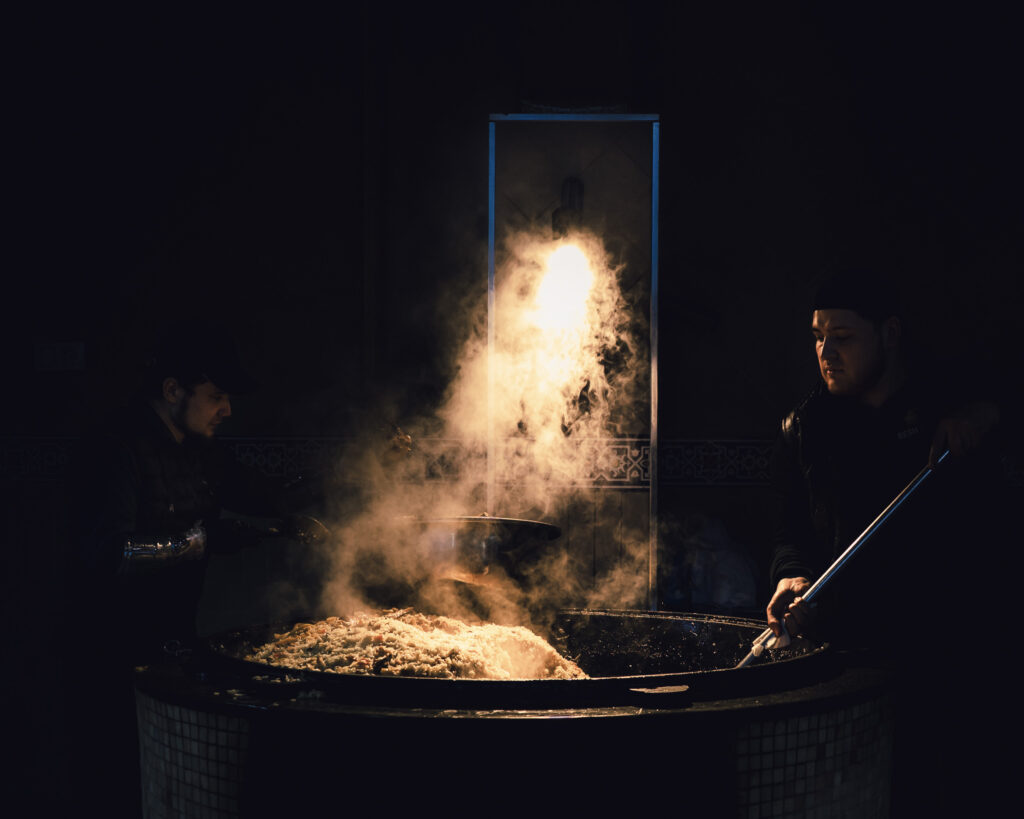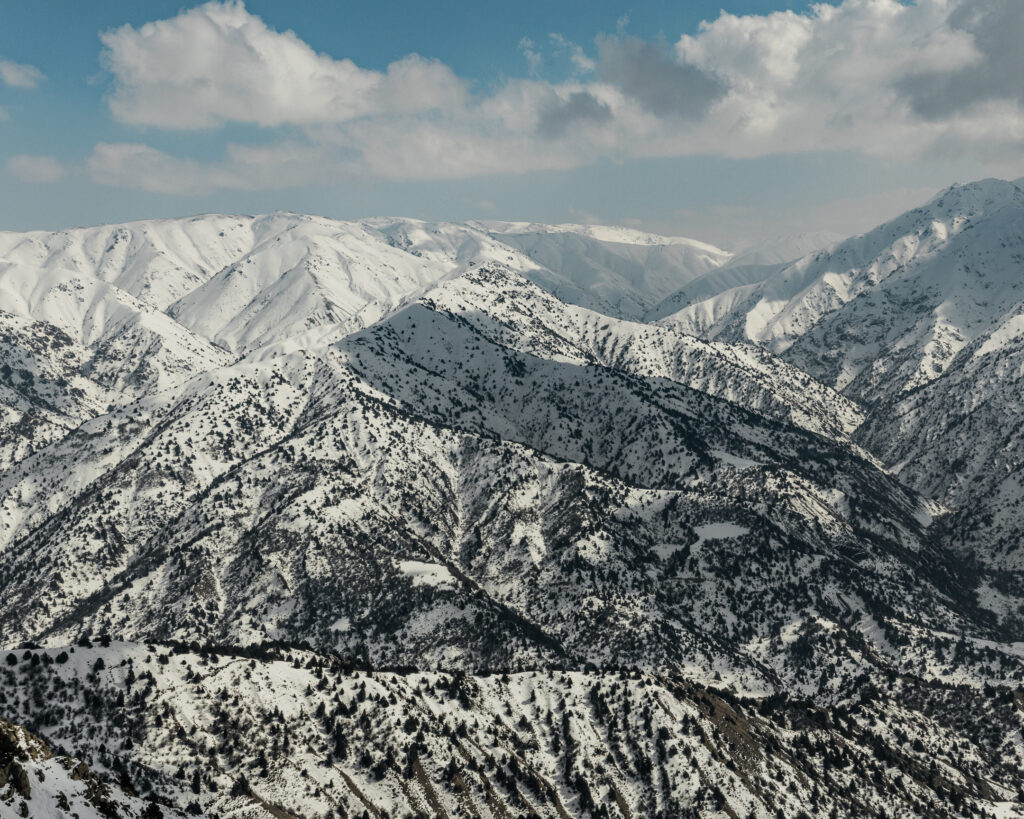Uzbekistan Cuisine: Must Try Dishes and Where to Find Them
Uzbekistan’s cuisine is a rich, aromatic journey shaped by centuries of tradition, trade, and cultural exchange along the Silk Road. Influences from Turkic, Kazakh, Uyghur, and Mongolian cultures are present in every bite, reflecting stories of nomads, traders, and warm-hearted hosts. Food in Uzbekistan is not just sustenance but a celebration of community, heritage, and hospitality.
Expect a fusion of flavours from Persia, the Middle East, China, Russia, and the Indian subcontinent. This blend creates a unique culinary profile, where saffron and dill meet hand-pulled noodles, and tandoor-baked bread is served alongside tangy fermented milk drinks. Here’s our take on must-try dishes, the cultural stories behind them, and local spots we found along the way.
Plov – The National Dish
Plov is not just Uzbekistan’s national dish, it’s a symbol of pride. Made with rice, slow-cooked lamb or beef, carrots, onions, and spices, it is usually cooked in a large kazan (cauldron) and served family-style.
Plov is linked to the 14th-century conqueror Amir Timur (Tamerlane), who, according to legend, used it as a calorie-dense meal to feed his armies. While folklore, many Uzbek cooks still honour the proportions: equal parts meat, rice, and carrot.
Traditionally made by men, plov recipes vary by region. Samarkand’s version is layered and steamed, slightly sweet with dried fruits and yellow carrots. Tashkent’s plov is more savoury and moist, with meat and vegetables roasted before combining with rice and spices. We tried both and preferred the richer Tashkent style. You can also try toi oshi (wedding plov) with quail eggs and horse meat sausage (kazi).
It is delicious but oily, so locals often balance it with fresh bread or a yoghurt-based drink like chalap, or simply Pepsi.
For specific locations to eat in Tashkent and Samarkand check out the guides here:
Tashkent Places to Eat
Samarkand Places to Eat
No food guide is complete without mentioning Besh Qozon, Tashkent’s most popular plov centre. Serving 5,000 to 8,000 people daily, it was packed at Ramadan iftar time. The large indoor and outdoor setup, efficient service, and flavour made it a highlight of our trip.

-
Shashlik
Skewered grilled meat, usually lamb or beef, cooked over open flames. Found at roadside stalls, night markets, and restaurants.
Shashlik is Central Asia’s take on kebabs, similar to Turkish şiş or Indian seekh kebabs. Unlike heavily spiced versions, Uzbek shashlik focuses on smoky, well-grilled meat.
Our first taste was at a tiny eatery in Samarkand, where the menu wouldn’t translate. Sensing our confusion, the waiter quietly led my husband next door to the butchery to pick a familiar meat, just to be safe. Who needs English anyway?Lagman
Lagman is a hand-pulled noodle dish from the Uyghur and Dungan communities with Chinese roots. Served as thick soup or stir-fry, it features tender meat and vegetables like onions and bell peppers in a tomato-based sauce.
Fried lagman was a favourite, with bold flavours well suited to the Indian palate. Each place puts its spin on it; if you see fried lagman on the menu, definitely try it.Manti
Manti are large steamed dumplings filled with minced lamb or beef, onions, and spices like black pepper and cumin. Soft and juicy, they are traditionally served hot with sour cream, yoghurt, or a light tomato sauce.
If familiar with dumplings from other regions, Uzbek manti are larger and subtly spiced. The thick dough holds in juices, which may burst when you bite in. Vegetarian versions with pumpkin, potatoes, or spinach are common.Chuchvara
Chuchvara are tiny dumplings served in broth or fried, similar to Russian pelmeni. Often paired with sour cream, they make a comforting starter or light meal.Mashkhichiri
Mashkhichiri is a traditional comfort dish made with mung beans, rice, and tender lamb or beef, slow-cooked into a hearty porridge-like consistency. Earthy and mildly spiced, it is popular in rural homes.
Mashkhichiri being cooked outside the restaurant in Samarkand

Mashkhichiri, Lamb chops and Non at Art Plov Restaurant, Tashkent
Shurpa
Shurpa is a hearty lamb soup with large meat chunks, carrots, and potatoes, slow-cooked for depth of flavour. It is similar to Indian paya but lighter and less oilySamsa
Samsa are savoury pastries baked with a flaky crust, filled with minced lamb or beef, onions, and spices. Similar to Indian samosas but baked, not fried, they resemble sambousek or börek. You will find samsa everywhere on streets, markets, and bakeries.

Non (Uzbek Bread)
Non is a staple on every Uzbek table. Round and slightly chewy, it is baked in a clay tandir oven. Regional variations include:
Samarkand non: thick, dense, and famously long-lasting
Tashkent non: softer and often served warm
Bukhara non: thinner with crisp edges and sprinkled with sesame or nigella seeds
Bread is usually served cold or at room temperature, which locals say brings out the flavour. It accompanies nearly every meal and balances meat-heavy dishes. Culturally, bread is never placed face down or cut with a knife but torn by hand as a mark of respect.
Beverages
Tea, served in a traditional teapot and sometimes complimentary, is the most common beverage and a sign of hospitality.
Pepsi is everywhere, with small grocery stores often called “Pepsi Market.” The popularity of Pepsi in Uzbekistan it almost felt like it is the country’s official sponsor. It is the default soft drink at most eateries, even more common than water.
Traditional drinks include chalap, a salty yoghurt-based drink similar to ayran, refreshing on hot days. Kompot is a sweet, stewed fruit drink served chilled, and kvas is a mildly fizzy fermented bread drink with an earthy flavour. They may not suit all tastes but are worth trying.
Although Uzbekistan is predominantly Muslim, alcohol is widely available. Local beers, vodka, and some Uzbek wines can be found, mostly in supermarkets or Tashkent’s nightlife spots. Traditional eateries rarely serve alcohol. It is best to keep alcohol consumption discreet and respectful, especially in conservative areas or during Ramadan.

The Pepsi Fountain at Magic City Land park in Tashkent.
Visiting During Ramadan
We travelled during Ramadan and were surprised by the accessibility of food. In Tashkent, most restaurants stayed open, while smaller family-run places in Samarkand closed in afternoons to prepare for iftar.
Eating in public during fasting hours did not seem an issue, as locals also ate out. Guesthouses offered meals during the day. The atmosphere was relaxed and respectful. Iftar service was quick despite the crowds, and the hospitality was memorable.
Candid Price Guide: Where We Went
This was our first spontaneous backpacking trip. We did no research and picked places based on what looked good while walking around and google maps is always our friend.
In Tashkent, Besh Qozon was a highlight, traditional spicy plov for 42,000 UZS. We also tried a wedding-style plov set at KamolonOsh Drujba (56,000 UZS), but found the plain version better.
Jizbiz was another nice spot. We tried fried lagman noodles (41,000 UZS) and lamb shurpa (51,000 UZS), both of which were excellent. At ART Plov, we had mashkitchiri and lamb ribs (150,000 UZS) which was our fanciest meal in terms of trying something new. The ambience is very ordinary. Tip: Always check the price and portion size before ordering.
For a quick bite, lavash wraps are a go-to. We tried both EVOS and Oqtepa Lavash, where two wraps cost us around 55,000 UZS. We preferred EVOS as their wraps were juicy and fresh.
We later came across Spotted by Locals – Tashkent, which lists several local favourites, some of which we have been to, worth checking if you’re planning ahead.
We never leave a Central Asian country without a Georgian meal as it’s much cheaper than what you’d get in Dubai. At Gamarjoba in Tashkent, the cozy ambience and khachapuri made us nostalgic for Georgia.
In Samarkand, Mahalla Osh is a good spot for Samarkand plov. A nice find for gelato was Dolce Italia near Registan Square, where two scoops cost just 25,000 UZS , delicious and reasonably priced, even for a tourist spot.
For cosy cafés, B&B Coffee House was buzzing even past midnight. Safia Ракат was another nice spot with cheap coffee and pastries.
For a full list of spots you can try in Tashkent and Samarkand check out the articles here.
Tashkent Places to Eat
Samarkand Places to Eat



Other Dishes to Know
While we only tried a few of the dishes below, these are some other popular names worth getting familiar with so you can look out for it on the menu.
- Dimlama: Slow-cooked stew of meat, potatoes, onions, carrots, sometimes cabbage or peppers
- Tukhum Barak: Dumplings filled with eggs and milk, served with sour cream
- Guzlama: Flat fried dumplings from Khiva with cheese, spinach, or meat
- Shivit Oshi: Dill-infused green noodles from Khiva served with stew
- Achichuk: Refreshing salad of tomatoes, onions, cucumbers with vinegar
- Qurut: Dried balls of fermented yogurt, salty and tangy, crumbled into soups
- Bademjan Salad: Roasted eggplant with tomatoes, onions, and herbs
- Beshbarmak: Flat noodles with boiled meat, of Kazakh origin
- Mastava: Hearty rice, meat, and potato soup
- Boortsog: Deep-fried dough bites often enjoyed with tea
General Impressions
Living in Dubai, we are used to fast service, but the speed of freshly cooked food in Uzbekistan, especially during busy iftar, was impressive.
The warmth and generosity of locals stood out. Tourists were often invited over, and tables were saved to help us sit sooner. The hospitality was as memorable as the food.





